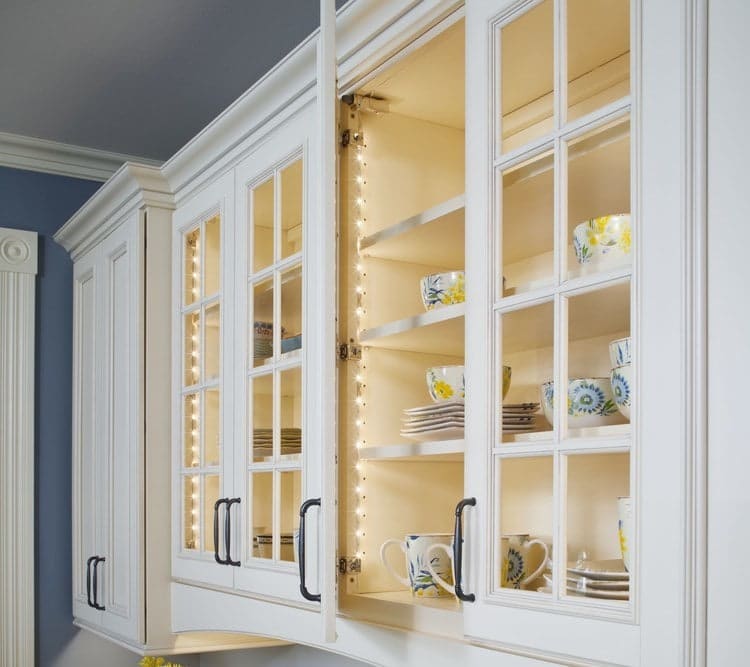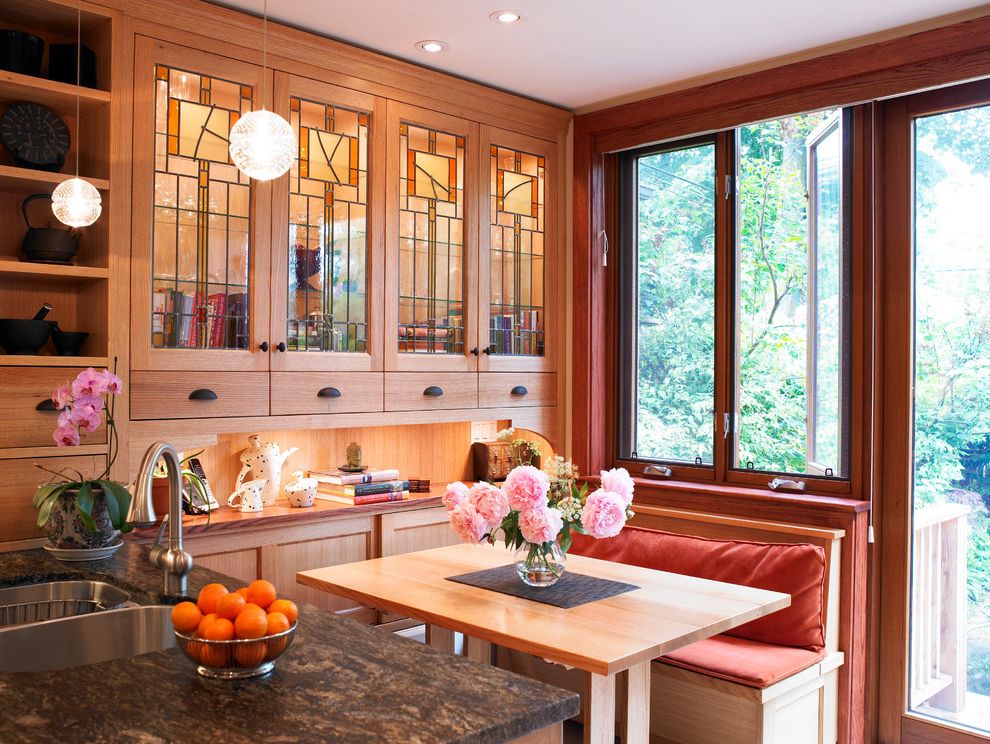Types of Interior Cabinet Lighting

Interior cabinet lighting is essential for illuminating the contents of cabinets, making them more accessible and visually appealing. It enhances functionality and aesthetics, creating a well-lit and organized space. There are various types of lighting options available, each with its unique advantages and disadvantages.
Under-Cabinet Lighting
Under-cabinet lighting is a popular choice for illuminating the work surfaces and countertops in kitchens and bathrooms. It is installed underneath the cabinets, providing a direct and focused light source.
- Pros:
- Provides excellent task lighting, illuminating work surfaces for cooking, preparing food, or applying makeup.
- Offers a wide range of styles and finishes to match different cabinet designs.
- Easy to install, often requiring minimal wiring and can be mounted directly to the cabinet.
- Cons:
- May create shadows on the work surface, especially if the lighting is not positioned correctly.
- Can be less energy-efficient than other types of lighting, especially if using traditional incandescent bulbs.
Recessed Lighting
Recessed lighting, also known as can lighting, is a popular choice for general illumination in cabinets. It is installed within the cabinet itself, providing a more discreet and integrated look.
- Pros:
- Provides a soft and diffused light that illuminates the entire cabinet space, making it easier to see the contents.
- Offers a variety of sizes and finishes to match different cabinet designs.
- Can be used in conjunction with other lighting types to create a layered lighting effect.
- Cons:
- Can be more expensive to install than other types of lighting, as it requires cutting into the cabinet and installing a recessed fixture.
- May require more wiring and electrical work, depending on the installation complexity.
Puck Lights
Puck lights are small, circular lights that are often used in cabinets and closets. They are typically mounted on the underside of the shelves or on the cabinet walls, providing a focused light source.
- Pros:
- Compact and easy to install, often requiring minimal wiring and can be mounted with adhesive strips.
- Available in various colors and brightness levels to suit different needs.
- Offer a modern and minimalist aesthetic.
- Cons:
- May not provide sufficient illumination for large cabinets or areas with a lot of storage.
- Can be less energy-efficient than other types of lighting, especially if using traditional incandescent bulbs.
Strip Lights
Strip lights are flexible LED lights that can be easily installed in cabinets, providing a continuous and even light source. They are often used to illuminate the entire interior of a cabinet or to highlight specific features.
- Pros:
- Highly energy-efficient, consuming significantly less energy than traditional incandescent bulbs.
- Offer a wide range of colors and brightness levels to suit different needs.
- Can be easily customized to fit different cabinet sizes and shapes.
- Cons:
- May require a power source, such as a plug-in adapter or a hardwired connection.
- Can be more expensive than other types of lighting, especially for high-quality LED strips.
Types of Light Bulbs
Various types of light bulbs are used for cabinet lighting, each with its unique advantages and disadvantages.
- LED (Light-Emitting Diode):
- Pros:
- Highly energy-efficient, consuming significantly less energy than traditional incandescent bulbs.
- Long lifespan, lasting up to 25,000 hours or more.
- Available in various colors and brightness levels to suit different needs.
- Cons:
- Can be more expensive than other types of bulbs.
- May require a specific type of dimmer switch for proper operation.
- Halogen:
- Pros:
- Produce bright and warm white light, similar to incandescent bulbs.
- Relatively inexpensive compared to LED bulbs.
- Cons:
- Less energy-efficient than LED bulbs.
- Shorter lifespan than LED bulbs, typically lasting around 2,000 hours.
- Generate heat, which can be a concern in enclosed spaces.
- Fluorescent:
- Pros:
- Energy-efficient, consuming less energy than incandescent bulbs.
- Longer lifespan than incandescent bulbs, typically lasting around 10,000 hours.
- Cons:
- Can produce a harsh and bluish light, which may not be suitable for all applications.
- May contain mercury, which requires proper disposal.
- Can be more expensive than incandescent bulbs.
- Warm white (2700-3000K) creates a cozy and inviting atmosphere, suitable for living rooms and bedrooms.
- Cool white (3000-4000K) provides a bright and crisp light, ideal for kitchens and bathrooms where task lighting is essential.
- Daylight (4000-6500K) simulates natural daylight, enhancing visibility and reducing eye strain, perfect for home offices and workspaces.
- Under-cabinet lighting provides focused illumination for countertops and workspaces, enhancing visibility and reducing shadows.
- Interior lighting, placed inside cabinets, illuminates the contents, making it easier to find items.
- Accent lighting, strategically placed to highlight specific features, adds visual interest and depth to the space.
- Under-Cabinet Lighting: This essential element provides task lighting for food preparation, ensuring a well-lit workspace. Under-cabinet lights can be installed using LED strips, puck lights, or linear fixtures, offering flexibility in style and brightness.
- Cabinet Interior Lighting: Illuminate the contents of your cabinets with interior lighting, making it easier to locate items and showcasing their beauty. LED strips, puck lights, or even battery-operated lights can be used for this purpose.
- Glass Cabinet Lighting: Enhance the elegance of glass-front cabinets with accent lighting. LED strips or puck lights can be placed strategically within the cabinet to create a soft glow and highlight the displayed items.
- Ambient Lighting: To create a warm and inviting atmosphere, consider incorporating ambient lighting. This can be achieved using pendant lights, track lighting, or recessed lights above the cabinets, adding a touch of sophistication to the space.
Factors to Consider When Choosing Cabinet Lighting: Interior Cabinet Lighting Options

Selecting the right cabinet lighting is crucial for enhancing functionality and aesthetics in your kitchen or bathroom. Several factors influence the decision-making process, ensuring you choose the most suitable lighting solution for your needs.
Cabinet Size and Layout, Interior cabinet lighting options
The size and layout of your cabinets significantly impact the type and placement of lighting fixtures. For smaller cabinets, under-cabinet lighting might suffice, while larger cabinets may require a combination of under-cabinet and interior lighting. Open shelving often benefits from accent lighting to highlight displayed items.
Desired Level of Brightness
The desired level of brightness depends on the purpose of the cabinet. Task lighting for food preparation or applying makeup requires brighter illumination than ambient lighting for general illumination.
Kitchen or Bathroom Style
The overall style of your kitchen or bathroom influences the choice of lighting fixtures. Modern kitchens often feature sleek, minimalist lighting, while traditional bathrooms may prefer more ornate fixtures.
Budget
Budget plays a crucial role in determining the type and features of cabinet lighting. LED lights, while initially more expensive, offer long-term cost savings due to their energy efficiency and extended lifespan.
Color Temperature
The color temperature of light bulbs, measured in Kelvin (K), affects the overall ambiance of the space.
Placement of Light Fixtures
The placement of light fixtures significantly impacts the effectiveness and aesthetics of the lighting.
Creative and Functional Applications of Cabinet Lighting

Cabinet lighting, beyond its practical purpose of illuminating the contents of cabinets, can be strategically employed to elevate the aesthetic appeal and functionality of any space. By thoughtfully incorporating various lighting types and techniques, you can create a captivating ambiance, highlight architectural features, and enhance everyday tasks.
Designing a Kitchen Cabinet Lighting System
A well-designed kitchen cabinet lighting system seamlessly integrates multiple lighting types to achieve optimal illumination and visual appeal.
Interior cabinet lighting options – Memilih lampu kabinet yang tepat bisa membuat ruangan jadi lebih nyaman dan estetis. Kalau kamar tidur utama kamu sudah punya televisi yang terpasang di dinding, seperti yang dibahas di artikel ini , lampu kabinet bisa jadi pelengkap yang pas untuk mempercantik ruangan.
Jangan lupa untuk pertimbangkan jenis lampu yang cocok untuk ruangan dan kebutuhan kamu, ya!
Interior cabinet lighting options can make a world of difference in your kitchen. They not only provide functional illumination but also enhance the overall ambiance. If you’re looking to brighten up your kitchen cabinets without the hassle of painting, there are some clever tricks you can try.
Check out this guide on how to lighten kitchen cabinets without painting for some great ideas. Once you’ve brightened up your cabinets, consider adding some under-cabinet lighting or even incorporating accent lighting inside the cabinets for a truly dazzling effect.
